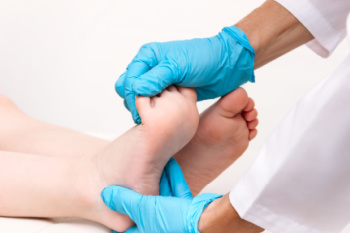Heel pain can range in severity from mild and annoying to severe and debilitating. Usually caused by an injury, heel pain can become chronic if it's left untreated. There are many different types of injuries that can bring about heel pain. When describing your pain, it is important to note the location and type of pain, as well as when the pain started and what activities make it better or worse.
Perhaps the most common cause of heel pain is plantar fasciitis, a condition in which the plantar fascia, a ligament that runs along the bottom of the foot, becomes inflamed due to repetitive overuse or trauma. This condition causes stabbing pain in the bottom of the heel. The pain is usually at its worst when you take your first few steps after a period of rest, like when you first get up in the morning. Plantar fasciitis is also sometimes accompanied by bone spurs, calcium deposits on the heel bone that can cause sharp pain that gradually evolves into a dull ache. Other possible causes of heel pain include Achilles tendonitis, heel fractures, bursitis, tarsal tunnel syndrome, and Sever’s disease.
Although treatment for heel pain depends on the underlying cause, most treatments involve resting, icing, and elevating the affected foot. Your chiropodist will also typically suggest that you wear more comfortable, supportive shoes or orthotics to help your heel heal. Over-the-counter pain medications are usually sufficient to manage heel pain. For more information about heel pain, please consult with a chiropodist.






